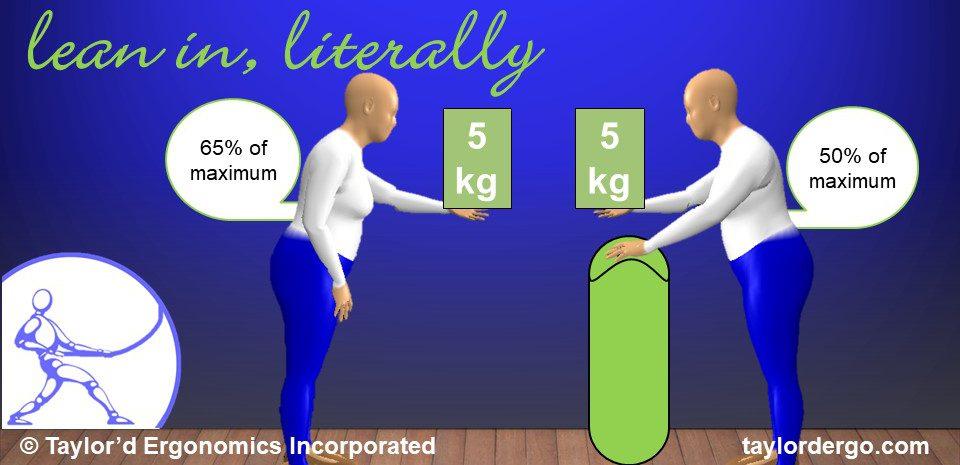Although I was a huge fan of Sheryl Sandberg’s book, “Lean In” has a more literal meaning for ergonomists. Most of us have leaned against something dusty or wet and then walked around not realizing that a sleeve, shoulder, back, or butt was dirty. Have you ever considered why people lean on things?
If you’re trying to do something that requires precision, you might lean to stabilize yourself. For example, if you’re taking a photo, or writing notes on a clipboard, or entering information into a touch screen, you may find that you shake less if your body or arm rests against something that is not moving. This explains why ergonomists often have dusty shirts! It also explains why it’s easier to change the radio station on your car if your thumb or elbow are resting on something.
Another good reason to lean is to alleviate some muscle strain. When you reach and bend forward, for instance, your arm and back muscles have to work to hold the weight of your arms and body. If you’re lifting an item while bending forward, the load on these muscles can be very high, and the pressure in the discs of your back may also be high. In the graphic shown above, I’ve compared the load on the back muscles when lifting a 5 kg (11 lb) item at arm’s reach, with and without leaning. In this case, leaning with one hand (pushing down with 5 kg of effort) reduced the back muscle effort from 65% of maximum to 50% of maximum. Leaning could be even more effective if the leaning support was closer to the body.
How can we use this tip in the workplace? Here are three ideas:
- Given an option, precise work should be performed with the hands above elbow height, and the forearms supported. Cushioning should be provided to avoid contact pressure.
- When a job cannot be designed to avoid forward-reaching and bending, a cushioned leaning device may be constructed to encourage the employee to support the weight of the upper body on an external surface, rather than using the back muscles to hold this position. This is the premise behind forward-leaning chairs promoted for dental workers.
- Providing knee, elbow, or shoulder pads might encourage employees who work in awkward positions to transfer some of their body weight to walls, frames, and other immovable structures. If leaning is uncomfortable because the surface is hard and the soft tissue is unprotected, the worker won’t lean into the work. An elbow, shoulder, or knee pad that is hard on the outside but soft against the body allows the worker to put more weight on it, comfortably.
Need some help? Lean on us. 😊


